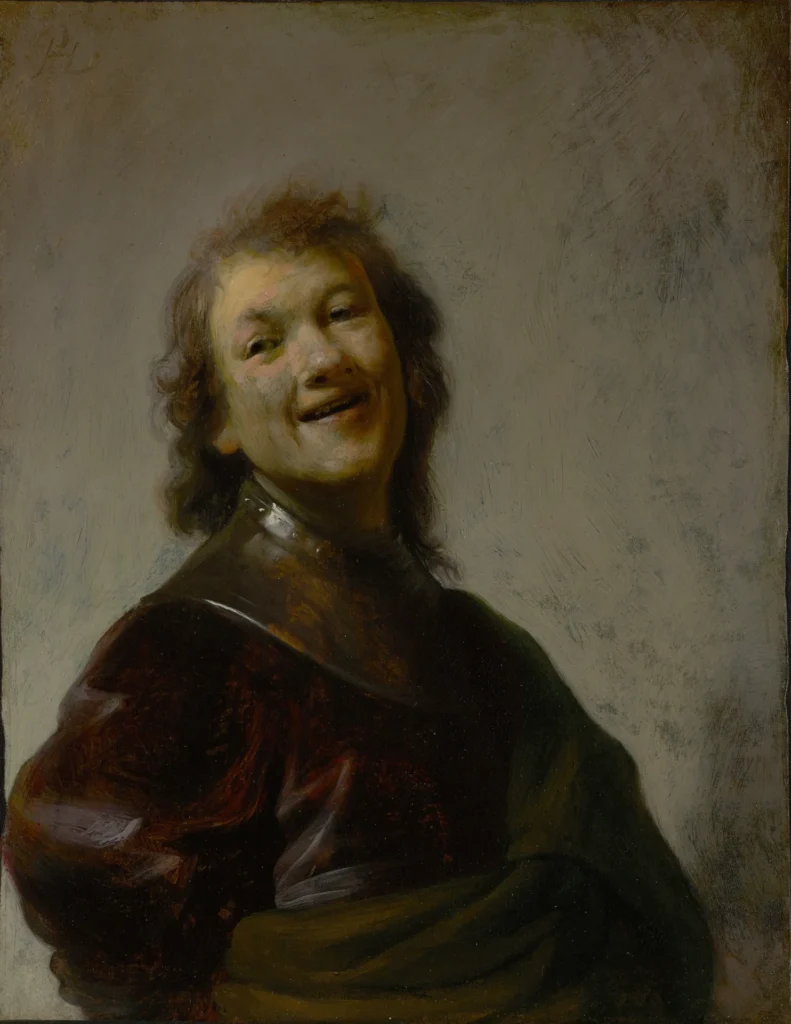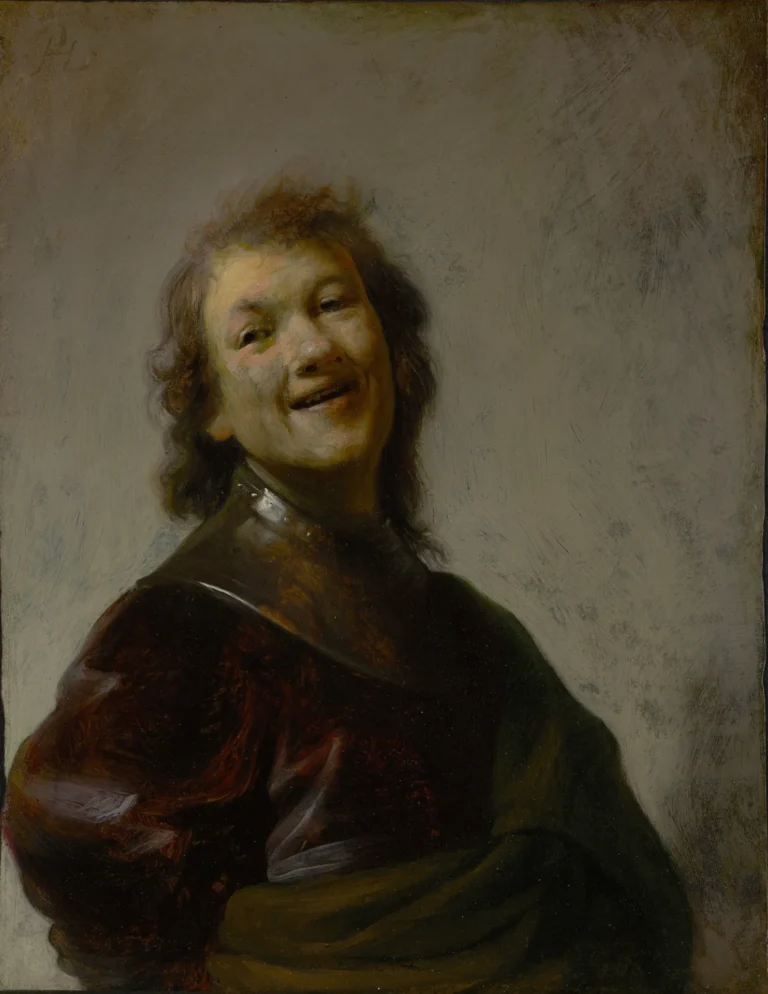Self-Portrait of Rembrandt Van Rjin Laughing
The 'Self-Portrait of Rembrandt van Rijn Laughing' showcases a young Rembrandt in a moment of genuine joy, painted around 1628 when he was just 21 years old. Characterized by vibrant brushwork and a spontaneous appearance, the artwork features Rembrandt adorned in a soldier's uniform, expressing both playfulness and confidence. This piece is an early example of a *tronie*, a genre focusing on character study, reflecting the artist's skill and ambition during his formative years as a master painter.
Year 1628
About the Artwork
Created during his early independent years in Leiden, Rembrandt’s 'Self-Portrait Laughing' captures the exuberance of youth and the artist's playful personality. Painted on copper, this artwork uniquely reveals his mastery of expression and innovative techniques. At the time, Rembrandt aimed to impress potential clients with a display of his talent, using this piece to convey both artistic ability and his captivating character. Initially misattributed to Frans Hals, its true identity was restored in 2007, further enhancing its significance as an iconic symbol of his early repertoire, laying the groundwork for the exploration of self-portraiture throughout his career.
Did You Know
Rembrandt painted this self-portrait when he was just 21 years old, marking a pivotal moment in his artistic development and professional independence.
This self-portrait is one of the few works that Rembrandt created on copper, showcasing his innovative approach to materials and his early experimentation with technique.
The painting was misattributed to Frans Hals for several years before being correctly identified as a Rembrandt in 2007, reaffirming its place in art history.










